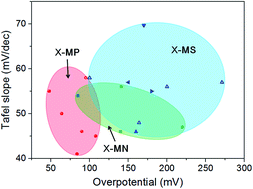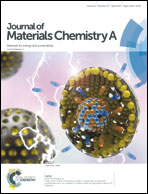Hydrogen evolution electrocatalysis with binary-nonmetal transition metal compounds
Abstract
The growing concern about global warming, environmental pollution and energy security has increased the demand for clean energy resources in place of fossil fuel. Cost-efficient generation of hydrogen from water splitting through electrocatalysis holds tremendous promise for clean energy. Central to electrocatalysis are efficient and robust electrocatalysts composed of earth-abundant elements, which are urgently needed for realizing low-cost and high-performance energy conversion devices. Transition metal compounds (TMCs) are a group of attractive noble-metal-free electrocatalysts for the hydrogen evolution reaction (HER). The incorporation of foreign nonmetal atoms into TMCs is a way of controllable disorder engineering and modification of their electronic structure, and thus may realize the synergistic modulations of both activity and conductivity for efficient HER performance. In the last few years, the interest in binary-nonmetal TMCs as an efficient HER electrocatalyst has grown exponentially owing to their fascinating electronic structure and chemical properties. Here, we sum up the recent developments of binary-nonmetal TMCs in HER electrocatalysis from the viewpoint of their tunable physicochemical properties. In addition, we identify major challenges ahead in this area and refine viable strategies and future research directions that will effectively address the said challenges.

- This article is part of the themed collection: Recent Review Articles


 Please wait while we load your content...
Please wait while we load your content...